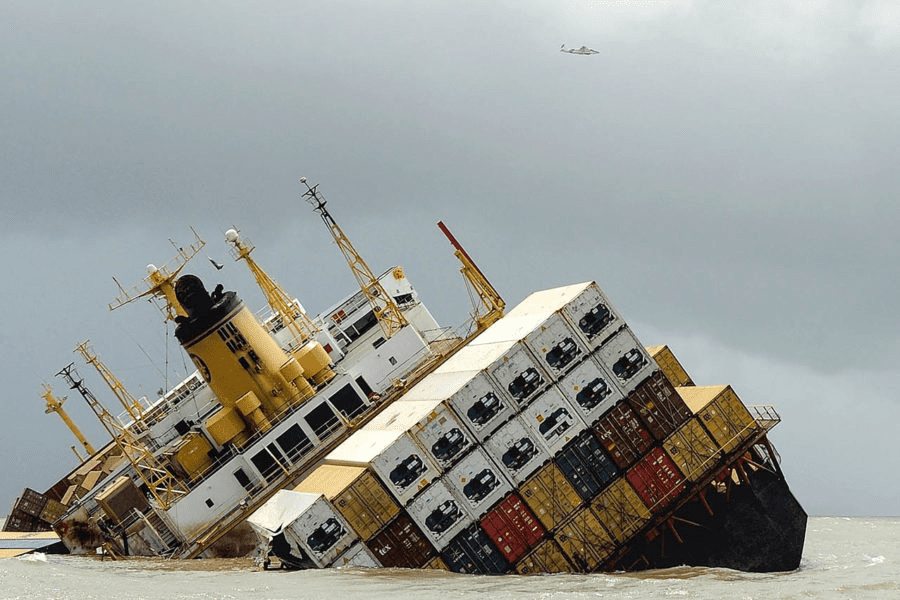An ocean is not just a mass of water. It creates opportunities by connecting continents. Oceans provide the cheapest way to transport goods between continents. However, your vessel is exposed to many hazards that can lead to losing goods and vessels. To combat these risks, you must invest in marine cargo transit insurance. There are many marine cargo transit insurance companies in Australia. Before you start looking for a company that can understand your unique requirements and offer the right product, you must be aware of hazards that can cause damage or loss.
Geographical and Weather Hazards
Sea freight is exposed to severe threats due to cyclones, typhoons, hurricanes, and other natural calamities. This can cause damage to the goods your vessel is carrying. This can also cause severe damage to your cargo vessel.
In addition to weather hazards, geographical hazards can damage your cargo vessel. Titanic is not the only example. You can avoid these risks using ships with watertight doors and strong steel. Equip your boat with technologies that can detect storms. Your crew should be well-trained to navigate safely by avoiding sandbars, icebergs, and other geographical hazards. There are some water conditions that you should avoid.
However, it is difficult to predict what nature will do even when using the latest technologies and all the preventive measures. Therefore, get the safety of marine cargo transit insurance that covers damages and financial losses due to weather and geographical hazards. When it comes to these hazards, the transit insurance protects you against
- Washing overboard
- Lightning
- earthquake
- volcanic eruptions
- Entry of water into your vessel
Man-made Hazards
Your vessel may be exposed to these hazards due to lack of experience, negligence, and bad intentions. Man-made hazards can also lead to serious damages and losses. This may happen during the loading or unloading of goods. Many times, inexperienced workers do not know how to handle goods properly at the time of loading or unloading. Marine cargo transit insurance covers damages and losses due to human hazards.
Packing Hazards
You have correctly packed and loaded goods to ensure safe delivery. However, when the vessel reaches its destination, the buyer refuses to accept the delivery because improper packaging damages the goods. The buyer may also file a lawsuit against you. Now, you are left with damaged goods and a lawsuit against you. If you carry proper marine cargo transit insurance, your company will help you. Some hazards can be caused by the material you are transporting.
This insurance is not only a legal requirement but also offers many benefits. However, you need to choose the right company for insurance.
First, work with a company that understands your unique requirements. It would be best to have a tailored insurance plan for complete protection against all hazards. If an undesired event takes place and your insurance does not cover damages or losses due to that event, you don’t get any benefit from the insurance plan. So, complete coverage is a must.
Imagine your vessel hit a storm that caused severe damage to the goods. Now, you have filed a claim. However, your insurance company is taking months to process your claim. This should not happen. The investigators or evaluators of the company should collect the required information and evaluate the claim on time. The company needs to protect itself from insurance fraud. So, it takes time to assess and process your claim. However, this doesn’t mean the process should be slow. Read online reviews to learn what existing clients say about the insurance company.
Water Damage
Water damage can occur due to leaks in the ship’s hull, ingress of seawater during rough weather or storms, improper sealing of containers, or condensation inside containers. It can result in the deterioration, spoilage, or contamination of marine cargo, particularly goods susceptible to water damage, such as food products, electronics, or sensitive materials. To prevent water damage, cargo should be adequately packed and protected with waterproof packaging and desiccants if necessary. Ships should undergo regular maintenance to detect and repair leaks, and containers should be inspected for integrity before loading.
Container Damage
Container damage can occur during handling, stacking, or transportation processes, including accidents during loading or unloading, mishandling by port equipment, or collisions at sea. Damaged containers may compromise the integrity of the cargo inside, leading to loss, contamination, or theft. They can also pose safety risks to workers and contribute to delays in delivery. Proper personnel training in handling and securing containers, routine inspection of containers for damage before and after use, and ensuring adequate stacking and securing of containers on board ships can help mitigate the risk of container damage.
Piracy and Theft
Piracy attacks typically occur in regions known for maritime crime, where armed individuals board ships to hijack cargo, ransom crew members, or steal valuable goods. Piracy incidents can result in cargo loss, vessel damage, injury or death to crew members, and financial losses for shipping companies. Measures to mitigate piracy risk include route planning to avoid high-risk areas, onboard security personnel, implementing security protocols and deterrents, such as barbed wire, fencing, or non-lethal weapons, and maintaining communication with maritime authorities and security agencies.
Container Overboard
Containers may fall overboard during severe weather conditions, improper securing, or accidents such as collisions or grounding. Container loss can lead to environmental pollution, navigation hazards for other vessels, and financial losses for cargo owners and shipping companies. Proper stowage and securing of containers, adherence to stability guidelines, regular inspections of container lashings, and use of advanced weather forecasting and route planning can help prevent containers from going overboard.
Fire Hazard
Electrical faults, engine malfunctions, machinery overheating, or the combustion of hazardous cargo such as chemicals or flammable materials can cause ship fires. Fires can result in the loss or damage of freight, endangerment of crew members, structural damage to the vessel, and environmental pollution. Implementing strict fire prevention measures, conducting regular fire drills and safety inspections, maintaining firefighting equipment and suppression systems, and ensuring proper storage and handling of hazardous materials can help mitigate the risk of fires on board ships.
Contamination: Cargo contamination can occur due to exposure to chemicals, pollutants, or biological agents during transportation, storage, or handling. Contaminated cargo may pose health risks to consumers, lead to product recalls, rejection of goods, or legal liabilities for cargo owners, and damage the reputation of shipping companies. Proper packaging and handling of goods, adherence to safety regulations and quality standards, regular inspections of cargo and containers, and maintaining cleanliness and hygiene on board ships can help prevent cargo contamination.
Improper Stowage
Improper stowage can occur due to inadequate planning, incorrect weight distribution, improper cargo securing, or non-compliance with stability guidelines. Improperly stowed cargo can lead to shifting, instability, or collapse of stacks, causing damage to marine cargo, structural damage to the vessel, or even capsizing in extreme cases. Proper planning and coordination of loading operations, adherence to stowage plans and weight distribution guidelines, securing marine cargo with lashings, dunnage, and blocking, and regular monitoring of cargo stability during transit can help mitigate the risk of improper stowage.
Regulatory Compliance
Non-compliance with international regulations such as the International Maritime Dangerous Goods (IMDG) Code or the International Convention for the Safety of Life at Sea (SOLAS) regarding the transportation of hazardous materials or dangerous goods can result in fines, penalties, delays in marine cargo clearance, detention of vessels, or even legal action against shipping companies and personnel. Ensuring proper classification, packaging, labeling, and documentation of hazardous marine cargo, providing appropriate training to personnel handling dangerous goods, and maintaining compliance with relevant regulations and standards can help mitigate the risk of regulatory violations.




